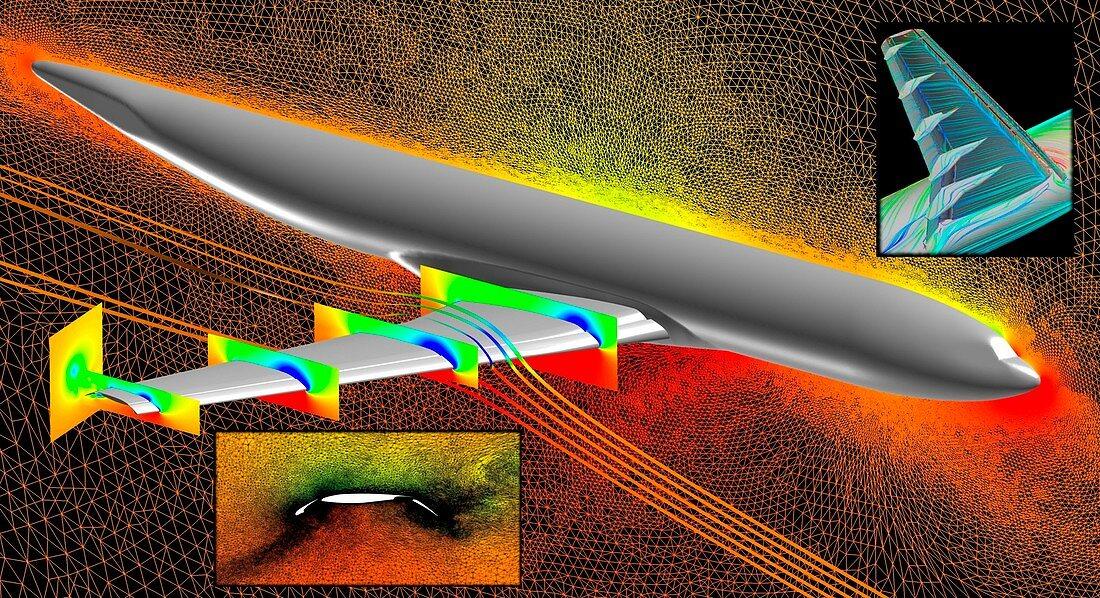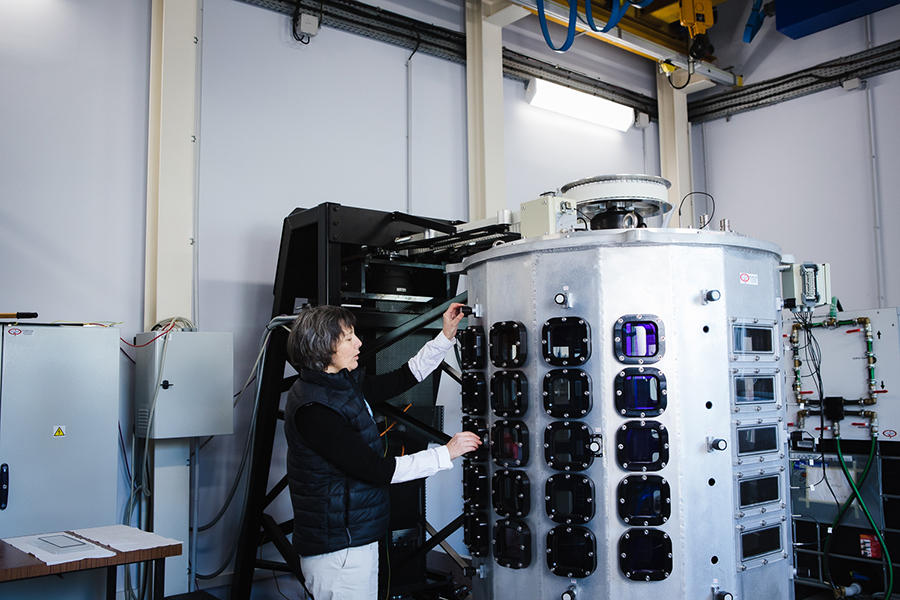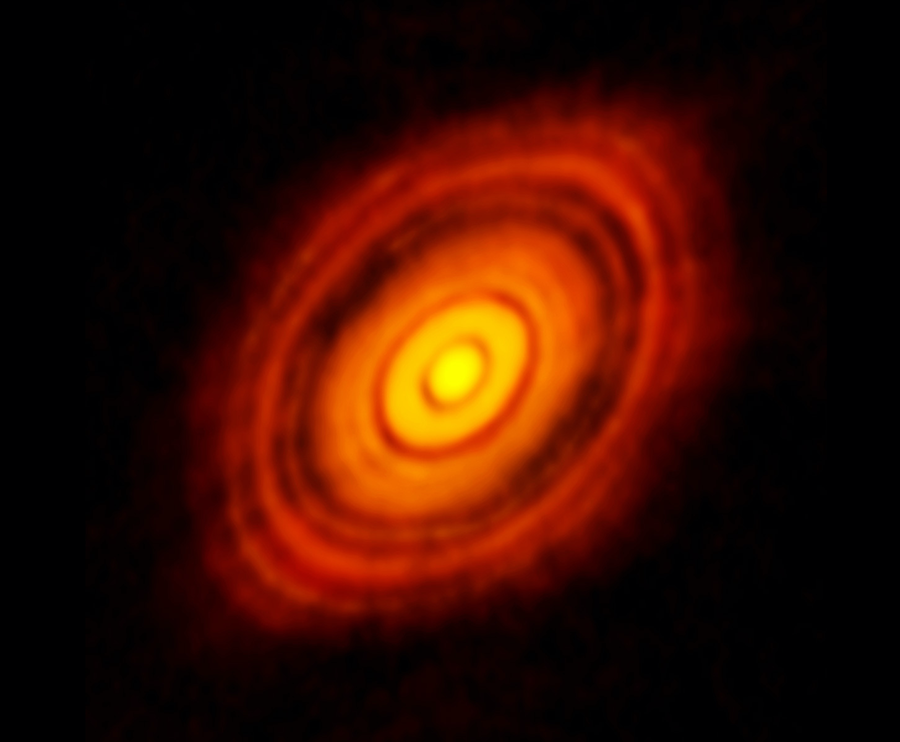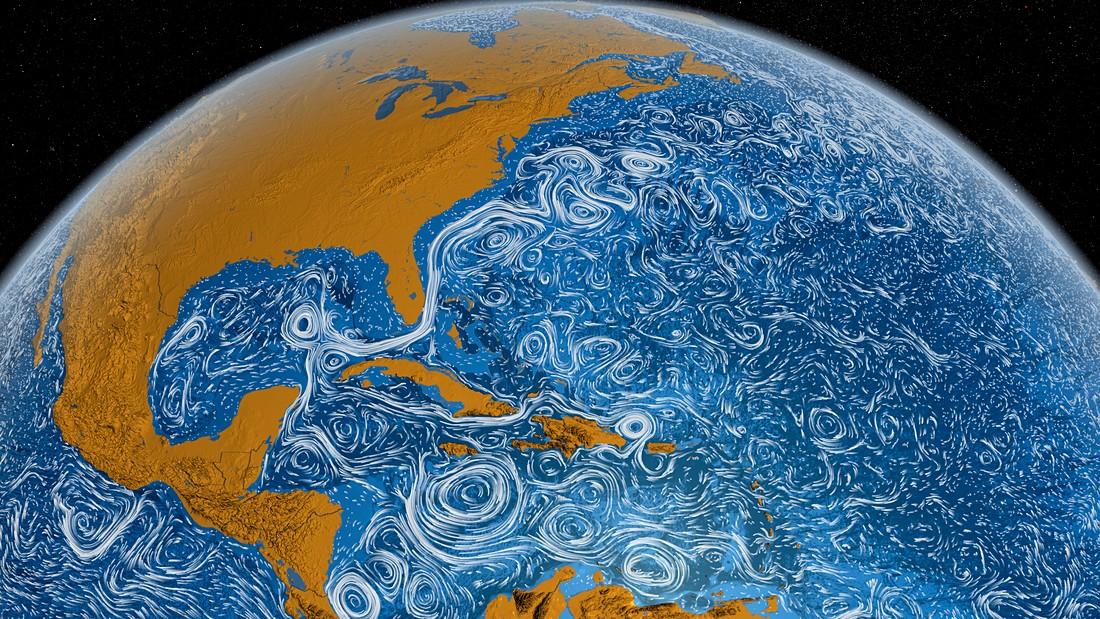You are here
The turbulent world of Bérengère Dubrulle
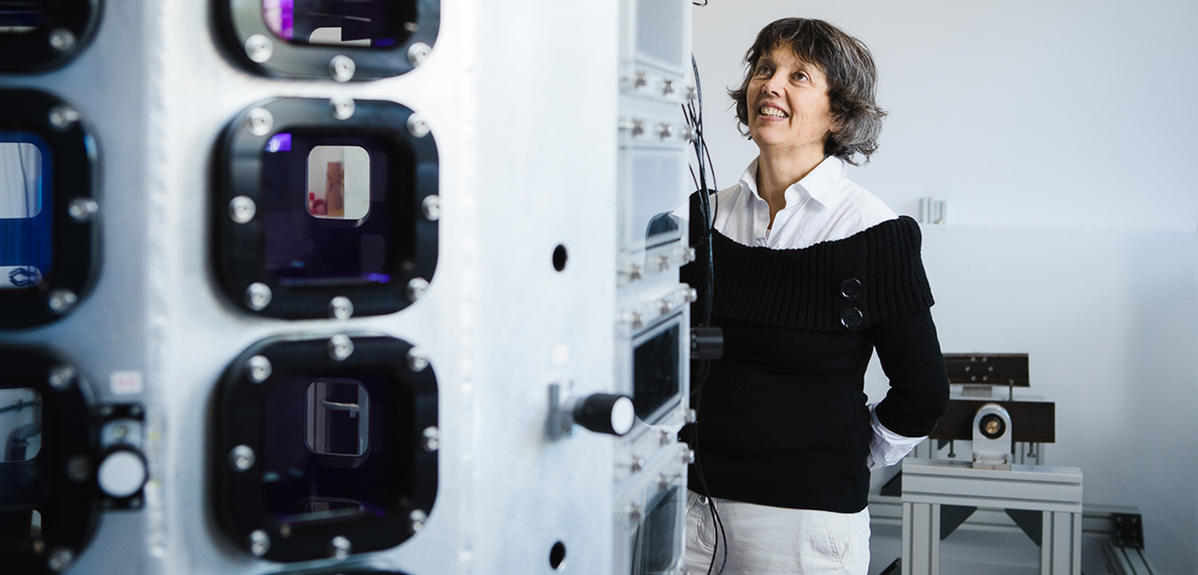
With Bérengère Dubrulle,1 turbulence is never far away. Both figuratively – she immediately reveals herself as dynamic, quick-witted, and always on the go – and literally: she spends most of her time thinking about turbulent phenomena called vortices, also known as whirls, swirls, eddies, or gyres depending on the context. And with good reason, as this CNRS research professor explains: “Vortices are found everywhere, on all scales.” Even on the very smallest, where they are present at the quantum level. Or on metre scales, in the whirlpool formed by soapy water draining out of a bathtub. Zooming out further, Earth's atmosphere is permanently stirred up by swirling masses of water vapour, forming depressions, storms and hurricanes. And when observing the wider Universe, the cosmic landscape is dominated by the huge whirling clumps of matter we call galaxies.
Dubrulle has made vortices, from the infinitely large to the infinitesimally small, the subject of her research. In her quest to understand them, she tirelessly explores turbulence in fluids, attempting to make sense of these swirling spirals of matter and reduce them to equations. This is meant to help her better comprehend the Universe, which “is made up of fluids, churned up by turbulent processes. Understanding how they work amounts to finding the key to its mysteries,” she says with a smile.
“More specifically, the answer lies in solving what is called the Navier-Stokes equation (named after two physicists, the Frenchman Henri Navier and the Anglo-Irish George Gabriel Stokes), which describes the motion of Newtonian fluids, in other words, almost all gases and liquids. This is the equation that every engineer makes use of when designing machines and vehicles such as aircraft. However, mathematicians have pointed out that it may include what is known as a singularity, a kind of anomaly that means there may be more than one solution to the equation, which is highly problematical.”
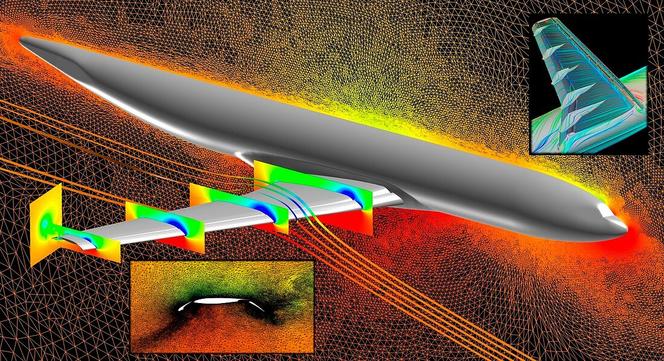
Could this just be a mathematical oddity of no relevance to the real world? By no means, says Dubrulle. “Imagine that, when designing their planes, aircraft manufacturers like Dassault or Airbus were to stop testing their prototypes and instead relied solely on simulations based on the Navier-Stokes equation – which is in any case the current trend. The fact that it may have several solutions could result, for example, in aircraft wings not behaving as expected in flight, which could prove disastrous. I must admit that this thought does occur to me every time I board a plane! This is such a conundrum that the Navier-Stokes equation has been included among the Seven Millennium Prize Problems by the prestigious Clay Mathematics Institute. Whoever solves it will go down in history.”
An “alien” inspired by Marie Curie
By relentlessly trying to unlock the equation's secrets, this passionate physicist could well make that happen. She first decided to become a scientist when she was around eight, not only when she looked up at the starry sky at her grandmother's house in Brittany, but also when leafing through books about famous people in history.
“One of the figures who really impressed me at the time was Marie Curie. As I read the biography of this woman who had pursued such a brilliant scientific career, I remember thinking to myself, ‘This is what I want to do, and I know I can do it’.” There's obviously something nicely symbolic about her being awarded the Academy of Science's Prix Irène Joliot-Curie, named after Marie Curie's daughter. Throughout her school years the young Bérengère felt “like an alien”, grasping everything she was taught after just a couple of minutes, and writing poems the rest of the time. She frequently felt lonely.
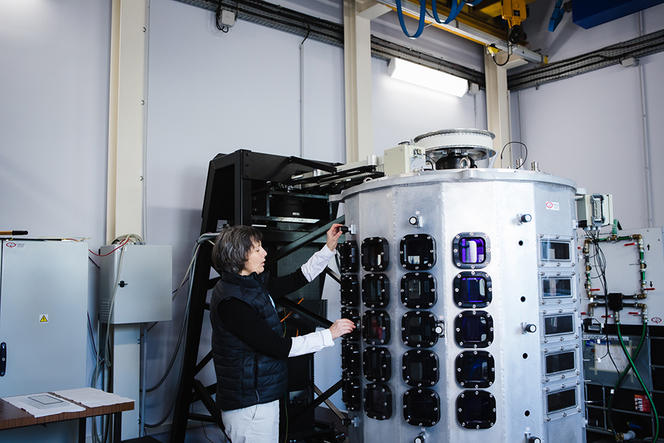
Yet this all changed when she entered the École Normale Supérieure (ENS). “There, I met other aliens just like me, people who shared the same interests. Especially astronomy,” she recalls. After the École Normale, Dubrulle decided to do a PhD in astrophysics, on the formation of planets, under the supervision of Jean-Paul Zahn of the Paris Observatory. In 1991, having completed her doctorate, she joined the CNRS.
Mastering turbulence
She was then 26 and about to make her first major contribution to her field of research. “We were up against a contradiction. According to the ‘snowball effect’ model of planetary formation, in other words, the gradual accretion of small grains of ice and silicate present in the protoplanetary disk, this process should have taken hundreds of millions of years. And yet a wide range of other data and dating measurements shows that our planet was formed in just a few tens of millions of years. To get round this problem, I suggested that the model should also incorporate the impact of turbulence, which I believed would affect all protoplanetary discs. And it worked: just as soap particles collect in the vortex formed by water draining out of a bathtub, the grains in the disc surrounding the Sun clump together very effectively along multiple vortices. This causes the embryos of planets to grow at a faster rate.”
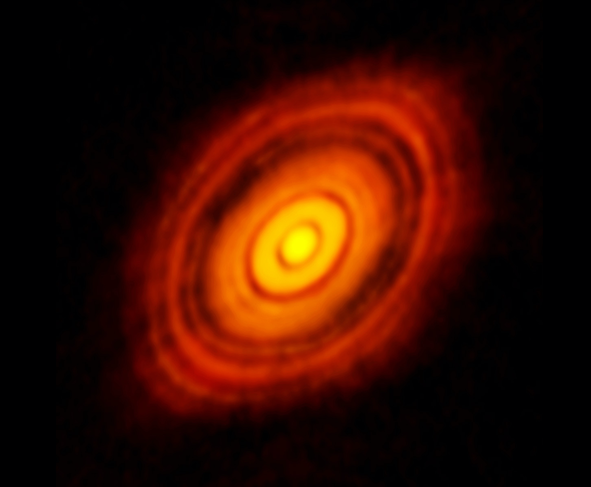
So by the end of the 1990s, Dubrulle, who had already been awarded the CNRS Bronze Medal a few years earlier, was none other than the author of a new model of planetary formation, today accepted and used by the entire scientific community. She was also the mother of three children, and expecting a fourth. “I wanted to fully stand by my choice to have children,” she says. “As a result, my career slowed down for twenty years, but I have no regrets. Having children anchors you in reality, and it forces you to take a break from theoretical thinking that can sometimes go round in circles. Carrying out everyday tasks often used to clear my head.”
Change for the climate
In 1999 Dubrulle, together with her family who, as she puts it, helps her to keep her feet on the ground, moved to the University of Colorado Boulder as a visiting researcher. “It was there that I first heard about climate change. I immediately said to myself that I had to do something about it,” she says. Her experience in the US was highly instructive and led her to take a new direction in her career. She decided to contribute her expertise in turbulence in the field of geophysics, with the aim of elucidating the vagaries of the atmosphere and the impact of human activity on the climate.
Back in France, she joined the Condensed Matter Physics Laboratory (SPEC). In this prestigious physics lab, “which provides all the necessary tools to make measurements and check models”, Dubrulle mainly studies the major currents and vortices that churn up the oceans and atmosphere. She is particularly interested in bifurcation processes, in other words, sudden changes in direction of marine and ocean circulation.
“For some time now, we've observed in our experiments the equivalent of a possible shutdown of the Gulf Stream as a result of climate change, as portrayed in the disaster movie, The Day After Tomorrow. Back in the early 2000s, I was among those scientists, rather like the ones depicted in the film, who warned of the potentially dire effects of global warming but weren't heeded.”
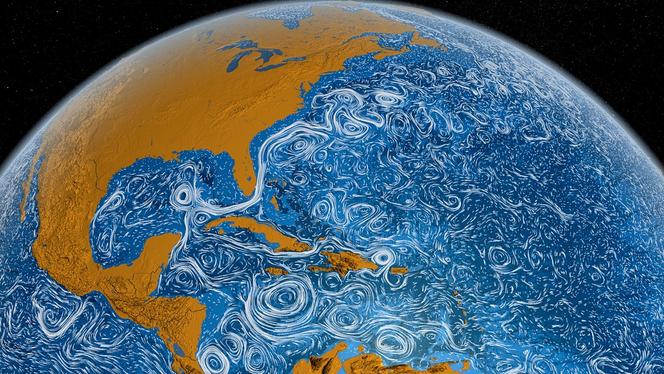
Now a recognised authority in her field, she is trying to figure out how turbulence on very small scales might prove to be the cause of bifurcations. Alongside her main research, she is still striving to improve current understanding of the fiendishly tough Navier-Stokes equation, takes part in many scientific dissemination initiatives, and continues to write poetry, just as she did when she was a little alien. Here's an excerpt: “I like to watch the night, you know. My clear gaze looking right into its empty orbits, peering into the future, the past or the end of time.” And like a whirlwind, track down the key to the mysteries of the Universe.
- 1. CNRS research professor at the Condensed Matter Physics Laboratory (SPEC – CEA / CNRS). She is also director of Les Houches School of Physics, in the French Alps.



